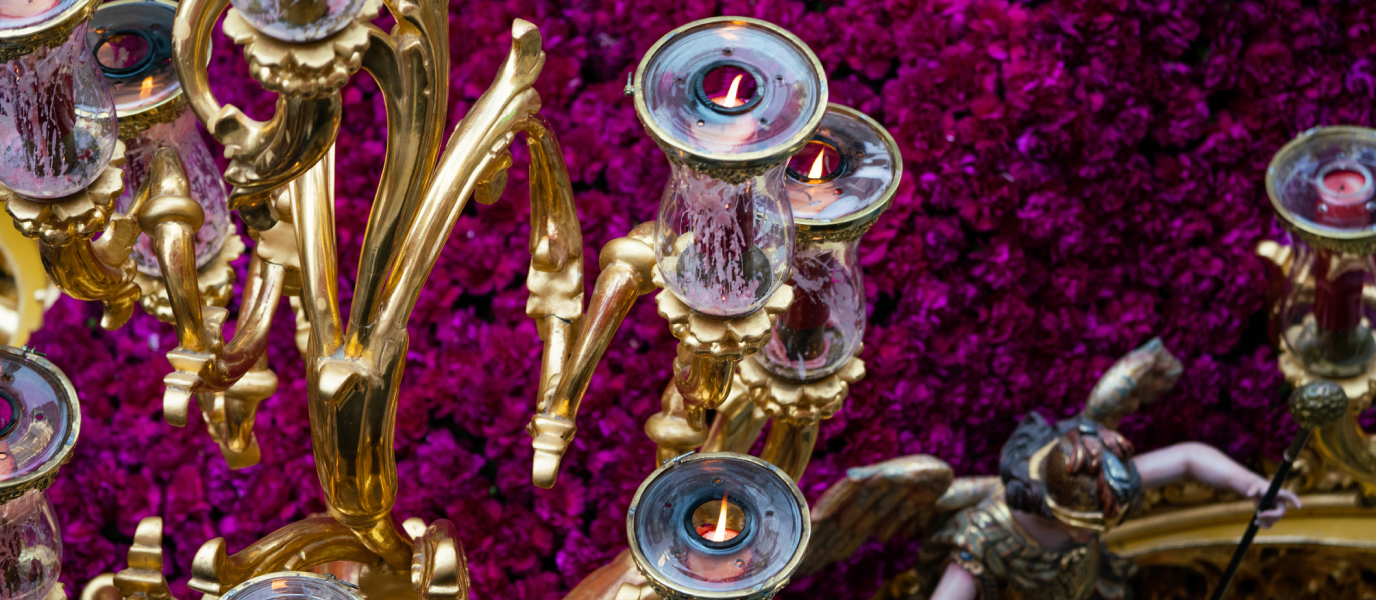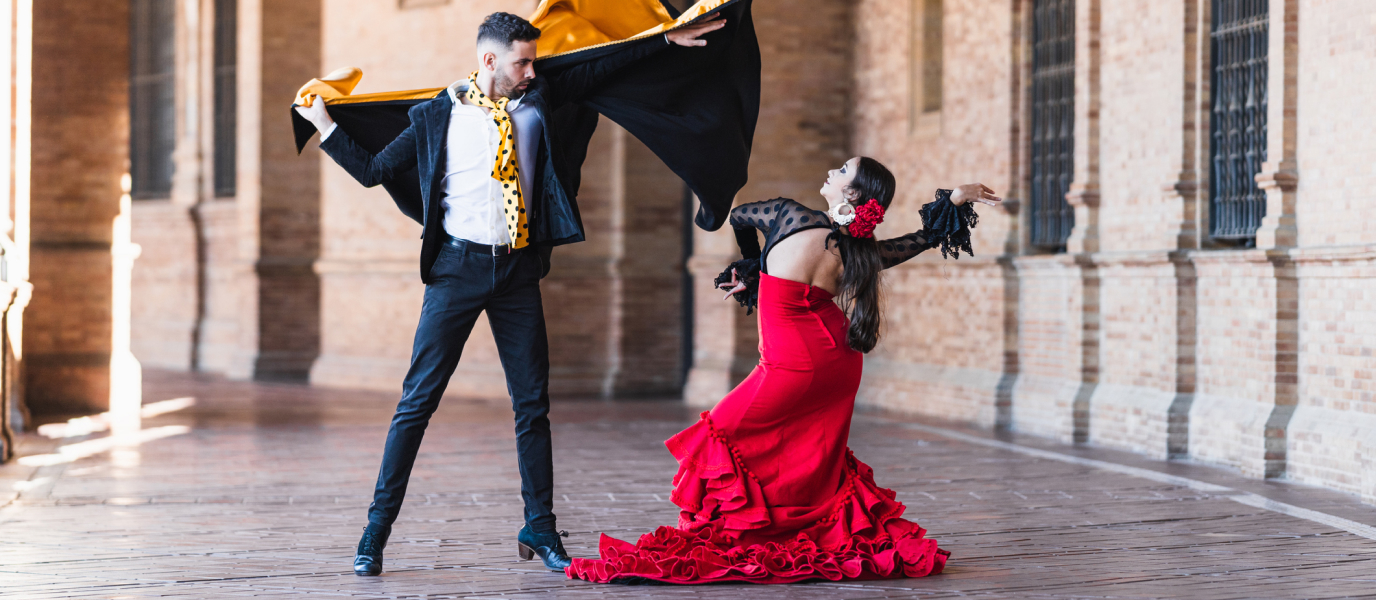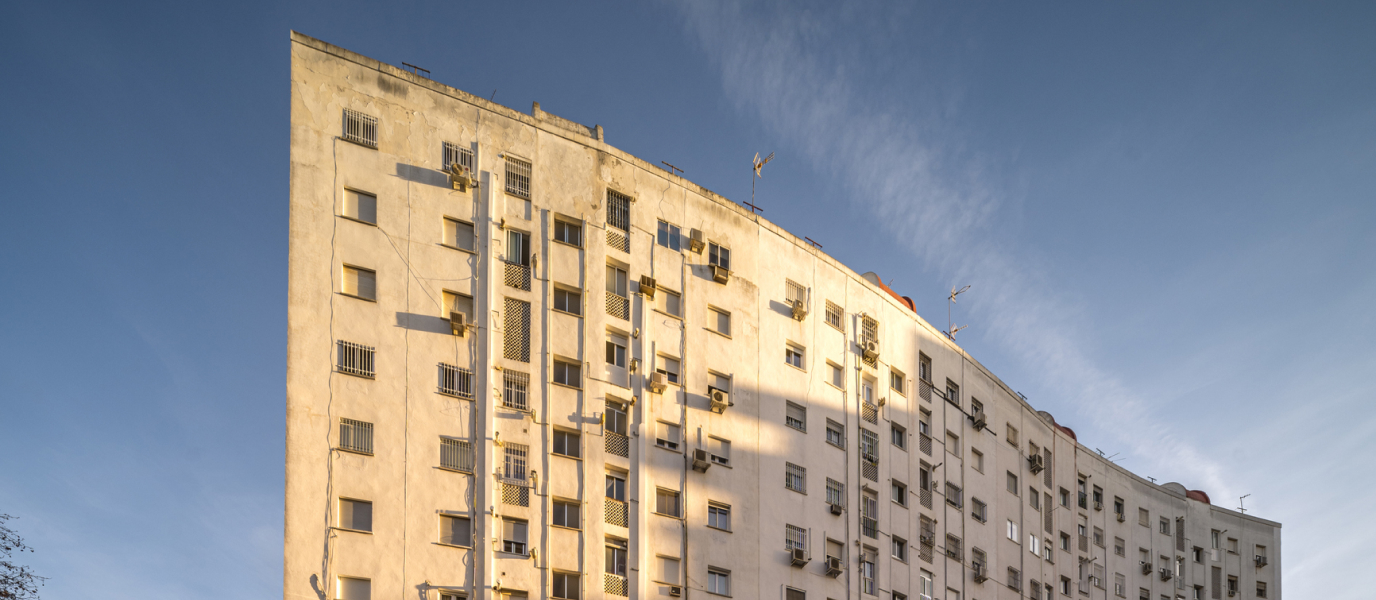Regardless of visitors’ beliefs or the strength of their religious convictions, the commemoration of the Passion of Christ in Seville is an art exhibition in its floats, most of which are great works of sculpture and sacred Baroque imagery; it is also an overwhelming spectacle of profound emotion, coordination and team work by religious Brotherhoods and float bearers. For several years, Seville’s Holy Week (Semana Santa in Spanish), has enjoyed the status of being a Festival of International Tourist Interest.
Nothing can beat the thrill of hearing the foreman give the float bearers the signal to march with a ring of the bell and a shout of “al cielo con ella” [lift her to the sky!]. Seeing the levantá, when the bearers raise the float, then the image moving forward to the beat of the music, or hearing a saeta sung from a balcony: these are some of the electrifying moments of the Holy Week processions—the highlight of which is the Madrugá de Sevilla, the procession that arrives at the Cathedral at dawn on Good Friday.
Seville Brotherhoods
For a few days, Seville smells of orange blossom and incense. The city revolves around its celebration of Holy Week and its Brotherhoods. Each Brotherhood holds its procession on a particular day and along a specified route, so that no two processions coincide. Over 60 end in the Official Route that leads to the Cathedral of Seville. The Official Route begins in the Plaza de las Campanas, where all the Brotherhoods have to request permission from the General Council of Holy Week Brotherhoods, installed in the gallery, to begin their processions. This itinerary takes in Calle Sierpes, the Plaza de San Francisco and a section of the Avenida de la Constitución. In these areas, chairs and galleries are set up and can be rented, either for single days or for debentures that are renewed year after year by the same families. The renewal date normally occurs in January or February.
Each Brotherhood is made up of nazarenos [penitents], between one and three floats carried by bearers, and a band of musicians playing processional marches. The most important Brotherhoods have thousands of penitents. You can tell if the Brotherhood is more popular or more solemn by the colour of the nazarenos’ robes. The darker the robes, the more silent and contemplative the Brotherhood. The nazarenos accompany the floats with their faces hidden as a sign of penitence. The most popular processions, those that demand less reverence, are an ideal event for the whole family to attend. Children amuse themselves eating the sweets handed out by the penitents, or making a ball of wax. They go around with a little ball of silver paper which they gradually cover with the wax that falls from the candles held by the penitents as they walk along.
Businesses in the city centre give out little books that detail the schedules and routes of the processions. It is also possible to download apps with the itineraries. But if you want to completely immerse yourself in Seville’s celebration of the Passion, the best way is to be accompanied by a capillita [little chapel]. These are groups of Seville residents who are devotees of Semana Santa, recognisable by the jackets and ties they wear, together with a symbol of their Brotherhood. They know the streets where a saeta will be sung, and the corners and arches where the float bearers will required to demonstrate their skills.
Best times to see the processions
The experience of watching a procession can vary considerably, depending on the time of day.
Between 4:00 PM and 8:00 PM in the evening is the best time to watch them with children, and to enjoy seeing the images in daylight.
At night between 8:00 PM and midnight: This is when the processions march along the Official Route, and the time when the crowds gather. In this section, the best plan is to rent a chair so that you can enjoy the procession.
After midnight: The walk to the Brotherhoods’ assembly points in their neighbourhoods begins, and there are fewer crowds. This is a particularly interesting time, because this is when the saetas are sung.
Seville’s processions and Brotherhoods day by day
Friday of Sorrows and the Saturday before Palm Sunday: Eleven Brotherhoods hold their processions on the Friday and Saturday preceding Palm Sunday, but do not pass by the cathedral. These are modest processions, and their routes take them through areas outside the centre.
Palm Sunday: One of the most important days, and the beginning of Holy Week. Seville residents set out early in the morning to tour the churches and see the prepared floats. It is a good time to appreciate the detail and decoration. The people of Seville put on their best clothes because according to tradition, “If you don’t wear a suit on Palm Sunday, you’ll lose your hands”. The women wear pastel shades and the men wear suits, preferably blue. During the afternoon, the first official Brotherhood processions take place, some with over 2,000 penitents. These are the La Borriquita, Jesús Despojado, La Paz, La Cena, La Hiniesta, San Roque, La Estrella, La Amargura and El Amor. It is customary to wear formal dress as a sign of respect, but comfortable footwear is recommended, as the centre of Seville is paved with cobblestones.
Holy Monday: As there are fewer crowds, this is a god day to enjoy images such as the Vera Cruz or the Museum floats. This day also sees the Beso de Judas, Santa Genoveva, Santa María, San Gonzalo, Penas de San Vicente and Las Aguas processions.
Holy Tuesday: On Tuesday the great traditional processions begin, such as the Bofetá (which is full of children), La Candelaria and El Cristo de los Estudiantes, which starts from the University. Other Tuesday processions include Los Javieres, San Esteban, San Benito and Santa Cruz.
Holy Wednesday: The following day is a public holiday, and so on the Wednesday the streets are crammed with spectators watching the processions marching through the city with images of the Passion of Christ, and other evocative scenes. Processions include La Sed, San Bernardo, El Buen Fin, La Lanzada, El Baratillo, Cristo de Burgos, Las Siete Palabras and Los Panaderos.
Holy Thursday: This is the eve of the emotional Madrugá. On this day, women wear traditional black dress with a mantilla as a symbol of mourning. Processions held here are: Los Negritos, La Exaltación, Las Cigarreras, Montesión, La Quinta Angustia, El Valle and La Pasión.
Seville’s Madrugá: The most emotionally intense night, with Seville’s more revered processions continuing throughout the night. The most renowned Brotherhoods, such as El Gran Poder, known as El Señor de Sevilla” [the Lord of Seville], La Macarena and Triana’s La Esperanza, which assembles on the bridge over the Guadalquivir river on the return to its barrio [neighbourhood]. The Brotherhood of Los Gitanos [the Gypsies] also holds its procession, and its arrival at the cathedral is quite remarkable. They begin at midnight and finish on the Friday morning. The overwhelming silence compensates for the cold of the Seville night. The ceremonies conclude with hot chocolate and churros [sweet fritters] from the stalls on the Triana bridge or outside the Basilica de la Macarena (internal link).
Good Friday: The main day of mysteries, when processions are undertaken by the Cristo de la Buena Muerte, La Carretería, Las Tres Caídas, El Silencio, El Calvario, La Carretería, La Soledad de Buenaventura, El Cachorro, La O, San Isidoro, Montserrat and La Mortaja.
Holy Saturday and Easter Sunday: A day of solemn processions with lower public attendance. Processions by Los Servitas, La Trinidad, El Santo Entierro, La Soledad de San Lorenzo and El Resucitado.
Traditional foods for Seville’s Holy Week
Seville also celebrates Holy Week in its bars and cake shops, where people recharge their batteries and have a rest after spending so many hours on their feet. Fried dishes, cod stews, and spinach with chickpeas are the most typical seasonal dishes, while in terms of desserts, pestiños [honey-coated fritters] and torrijas [a kind of French toast with honey] are treats not to be missed.







































































